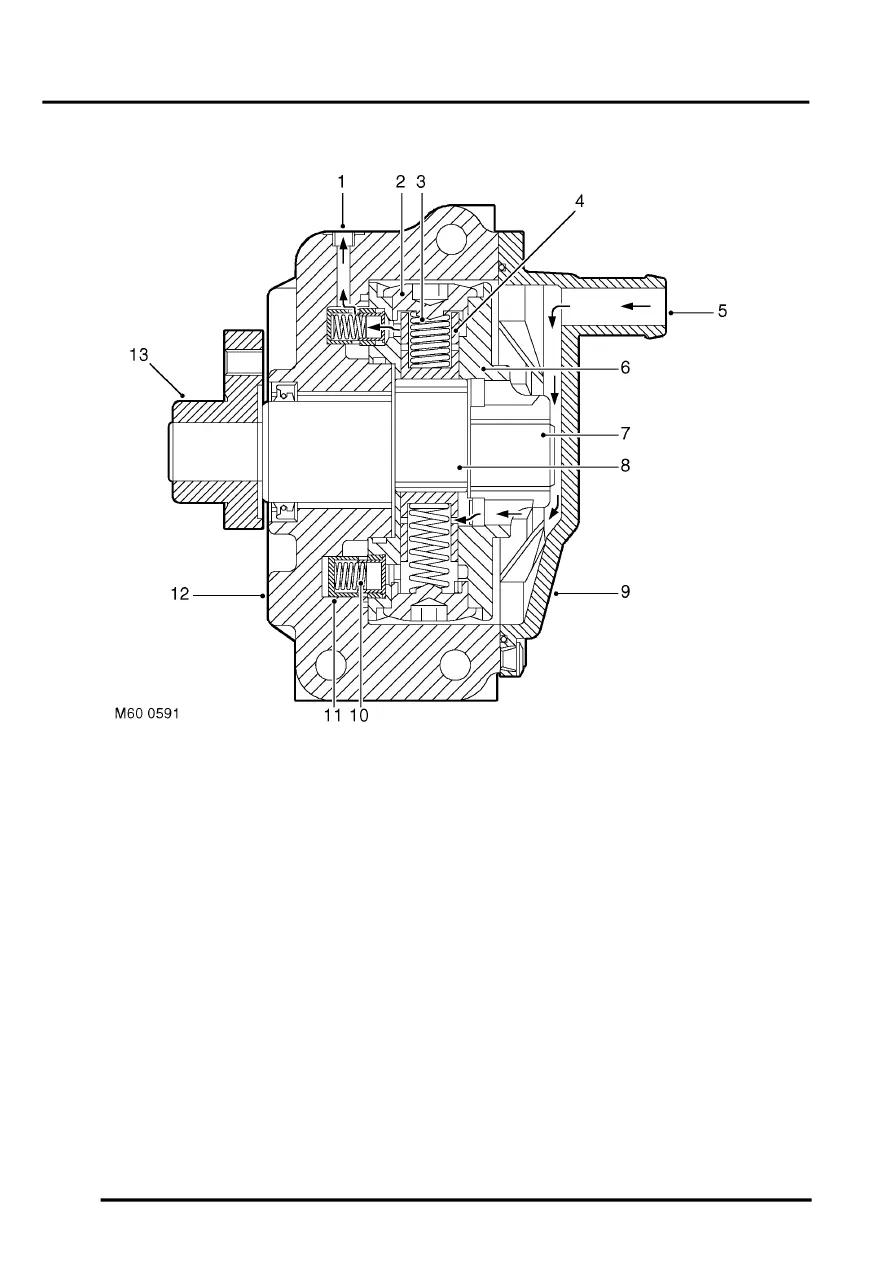Discovery II

FRONT SUSPENSION
60-12
DESCRIPTION AND OPERATION
Hydraulic pump
1 Outlet port
2 Cap
3 Piston spring
4 Piston
5 Inlet port
6 Cylinder housing
7 Shaft
8 Cam
9 Inlet housing
10 Spring
11 Discharge valve
12 Housing
13 Pulley attachment flange
The hydraulic pump is attached to a bracket on the left hand side of the engine and is driven at crankshaft speed by
the auxiliary drive belt. The pump is of the radial piston type which delivers fluid at high pressure.
The radial piston pump has six pistons located in bores in a cylinder housing. A central shaft, which is driven by a
pulley and the auxiliary drive belt, has a cam which operates the pistons as it rotates.
As the cam lobe reaches each piston, the piston is pushed outward, moving the fluid above the piston. The pressure
created by the fluid flow from the bore opens a spring loaded discharge valve and allows the fluid to flow to the pump
outlet port. When the piston reaches its full stroke, the flow reduces and the discharge valve closes under spring
pressure.
As the cam lobe moves away from the piston, a spring pushes the piston down the bore creating a vacuum above the
piston. As the piston moves down the bore, ports in the piston are exposed and connect with the fluid inlet. The
vacuum draws fluid into the piston filling the piston and the chamber above it. As the piston is again pushed upwards,
the ports are closed off by the bore and the fluid opens the discharge valve and flows to the outlet port.
